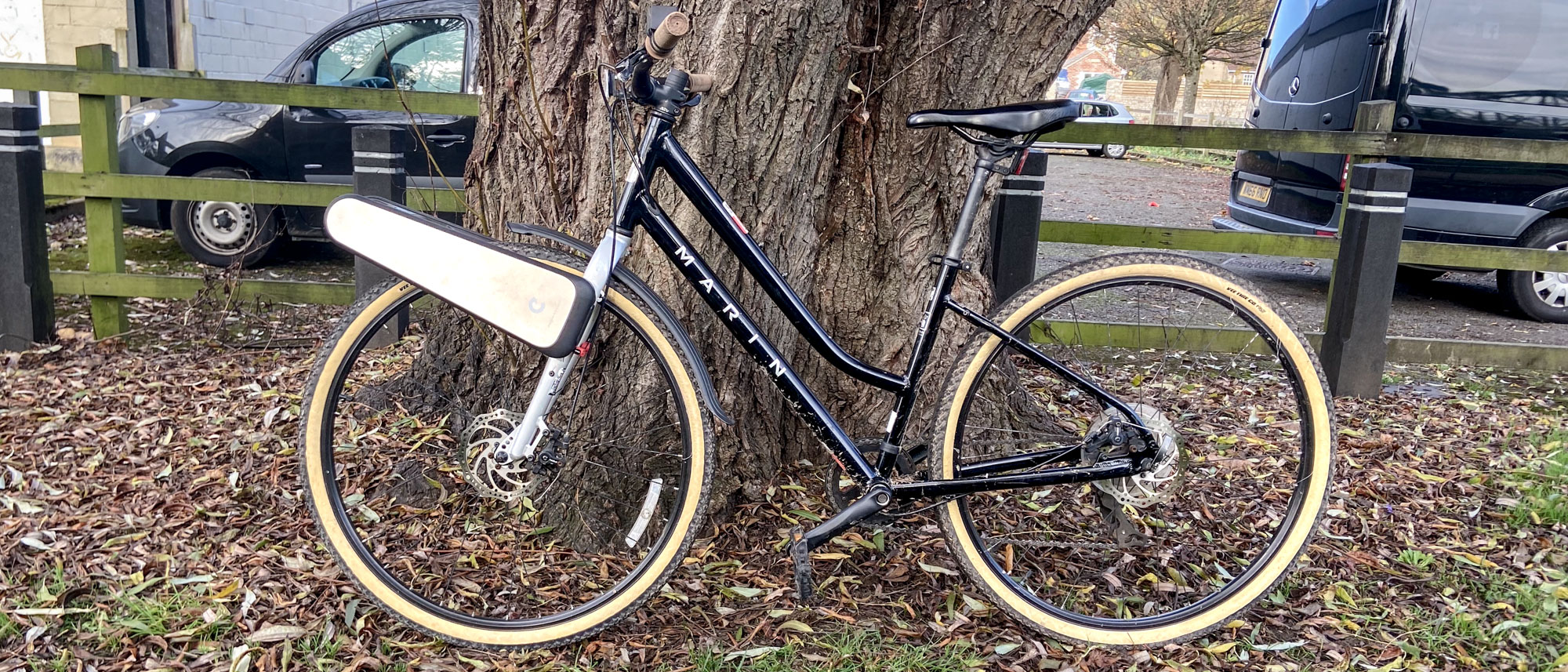Tom's Guide Verdict
CLIP is a clip-on e-bike conversion kit designed to be removed quickly and easily. While this simple installation is one of the CLIP’s benefits, the high price, extremely short range, bulk, and lack of waterproofing make it difficult to recommend.
Pros
- +
Speedy charging time
- +
Torque blast button
- +
Easy installation and removal
Cons
- -
Only 4-6 mile range
- -
Bulky
- -
Heavy
- -
Not waterproof
- -
Incompatible with mountain bikes/suspension forks
Why you can trust Tom's Guide
If you’re looking to power up your commute, investing in one of the best electric bikes could be a great way to do that. However, even the best budget electric bikes start at around $1,000, which is a sizable chunk of dough. Plus, if you already have a great bike, you probably won’t want to buy a brand new one.
Enter the CLIP e-bike conversion kit. This is a $499 clip-on friction drive attachment, designed to be easily attached and removed for navigating urban commutes. The installation is extremely straightforward and easy to master, which makes it perfect for daily use. However, the range tops out at just 6 miles, which worked out to 1 ½ commutes for me. To add salt to the proverbial wound, the CLIP isn’t waterproof, which doesn’t bode well for me given I live in the U.K.
Considering this device is $500, I expected a lot better. Find out the full story in this CLIP e-bike conversion kit review.
Disclaimer
DISCLAIMER: We suspect this specimen's boost blast button may have been faulty. We are waiting on a replacement CLIP and will update this review accordingly.
CLIP review: Cheat sheet
- What should you use it for? Giving a little oomph to your urban commute without having to buy a whole e-bike
- What does it cost? $499 from Clip
- What does it do well? It charges in under 30 minutes and has a torque boost button
- What do I wish it did better? I wish said torque boost button was more reliable, that the kit wasn’t so big and heavy, and its range was longer than 6 miles
- Is that it? Unfortunately not — I also wish it was waterproof and that it could accommodate suspension forks
CLIP review: Specs
| Price | $499 |
| Weight | 8.8 pounds |
| Dimensions | 18 x 5.5 x 5.6 inches |
| Max speed | 15mph |
| Charging time | Under 30 mins |
| Range | 4-6 miles/6-10 kilometers |
| Power | 96Wh |
| Color | White |
| Waterproof | No |
CLIP review: Price & availability
The CLIP e-bike conversion kit costs $499 direct from CLIP. I tested the Commuter version, but CLIP also makes a $599 Explorer model, which has a range of 15 miles. Shipping in the continental United States is free, but costs $100 to Canada and $600 to Alaska and Hawaii. It’s £450 from CLIP U.K., but is only available for a £50 reservation right now. CLIP is unavailable from third-party retailers.
CLIP review: Installation
Installing the CLIP is really easy, and one of its best features. As you might have guessed from the name, the kit is simply a clip-on design. While the Swytch Go setup involved removing a wheel and installing a tube and tire, the CLIP installation was as easy as clipping the friction drive device over my bike and aligning it with the two forks on the front wheel. From there, I aligned the red roller on the inside of the CLIP on my wheel and pulled out the attachment handle until it clicked.
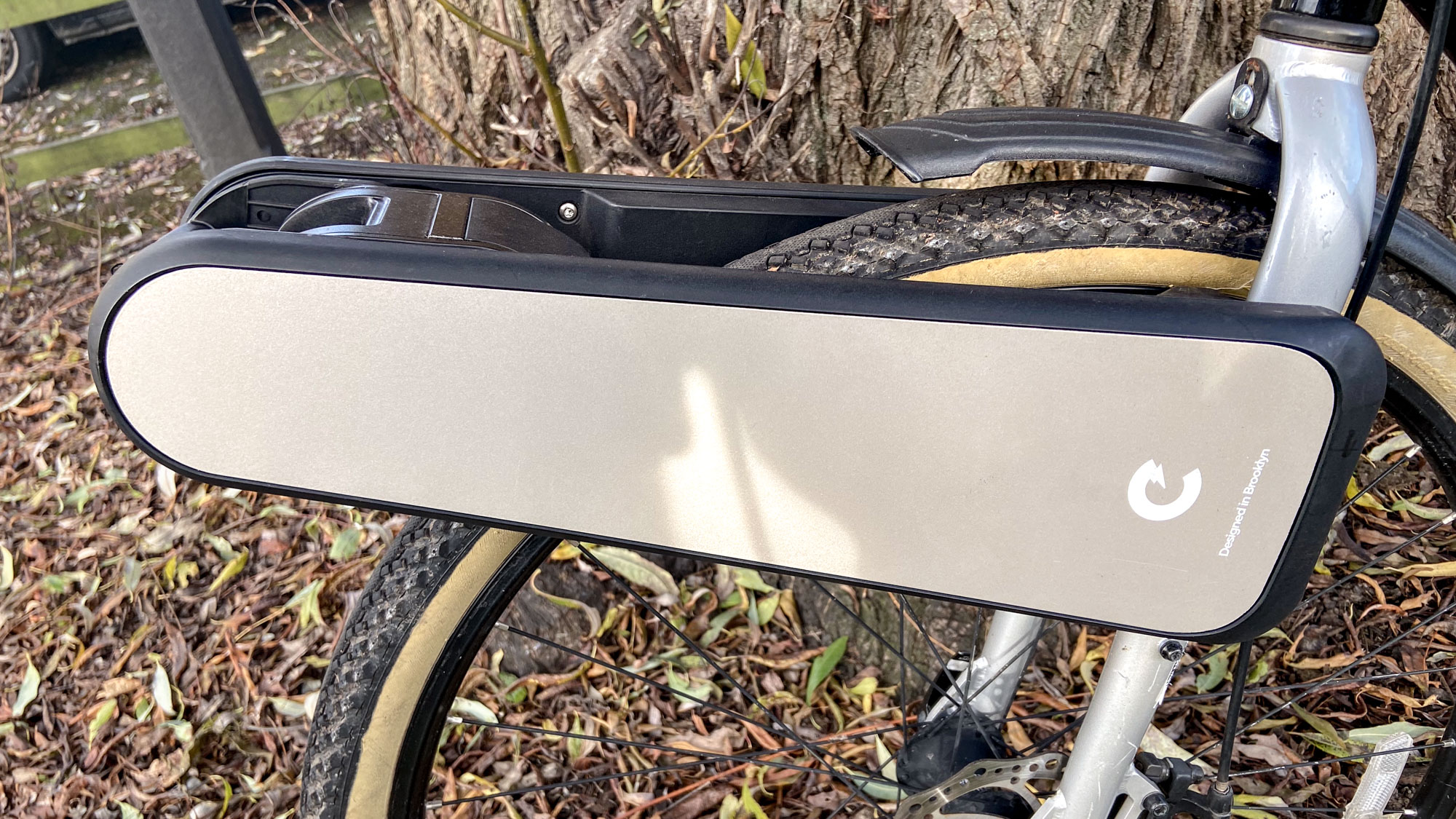
To remove, you simply pull out the attachment handle again and lift the CLIP off your wheel. The CLIP is designed for commuters with the idea that upon arriving at your destination, you will remove the CLIP to prevent theft and to recharge it before your ride home.
You need to install the remote onto your handlebars, which is as easy as snapping some Velcro-like strips into place. This remote contains the ‘boost’ button and the regenerative braking button — more on that in the ‘Performance’ section. There’s no OLED screen, unlike the Swytch Go, so you have no way of knowing your live trip distance, speed, or battery level (other than the four blinking dots on the CLIP itself).
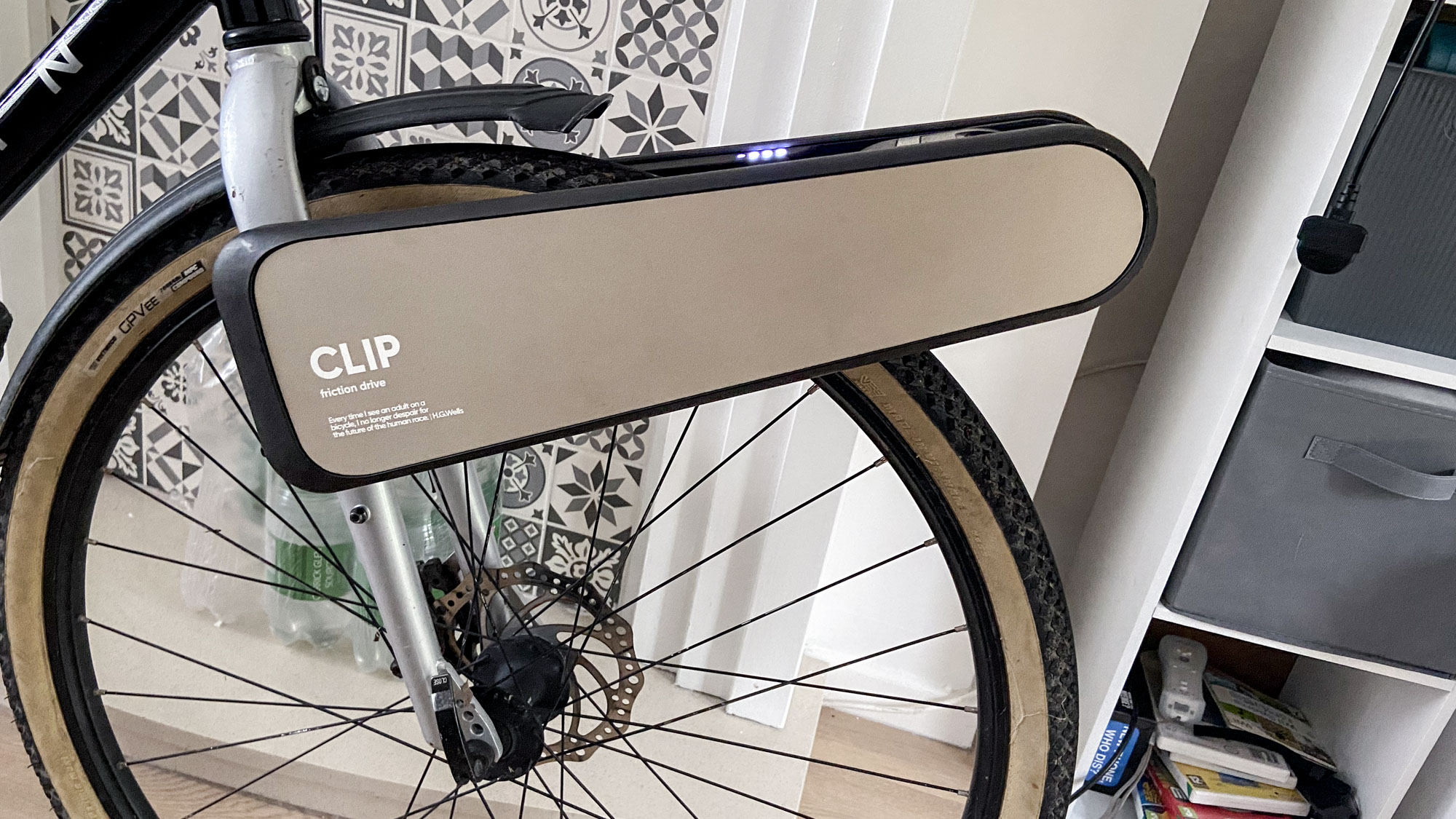
As someone who wouldn’t describe herself as particularly handy, this setup and removal was incredibly easy. If you, too, wouldn’t describe yourself as handy, this installation would be much easier to master than that of the Swytch Go.
It’s worth noting that if you have a mountain bike (like me) or a bike with suspension forks, the CLIP is incompatible. I tested the CLIP on a rental city bike with a concave frame.
CLIP review: Performance

I was super excited to get started riding the CLIP. My house is at the top of a very steep hill — which I never stop complaining about, much to the chagrin of my colleagues — and when I summit said hill on my Voodoo Bantu bike, I have to spend the following half hour recovering in a sweaty daze.
The CLIP helped me summit (no hyperbole there — it’s a killer) the hill in under a minute. However, the red boost button did little to combat my exertion. Even when I pressed the button down continuously, the button only boosted me for five seconds, then spluttered out. I had to press the button again each time, only for it to splutter out after a few seconds. I still had to stand up on the bike and pedal with all my might to get up the hill, not ideal if you’re using this bike to commute to work.
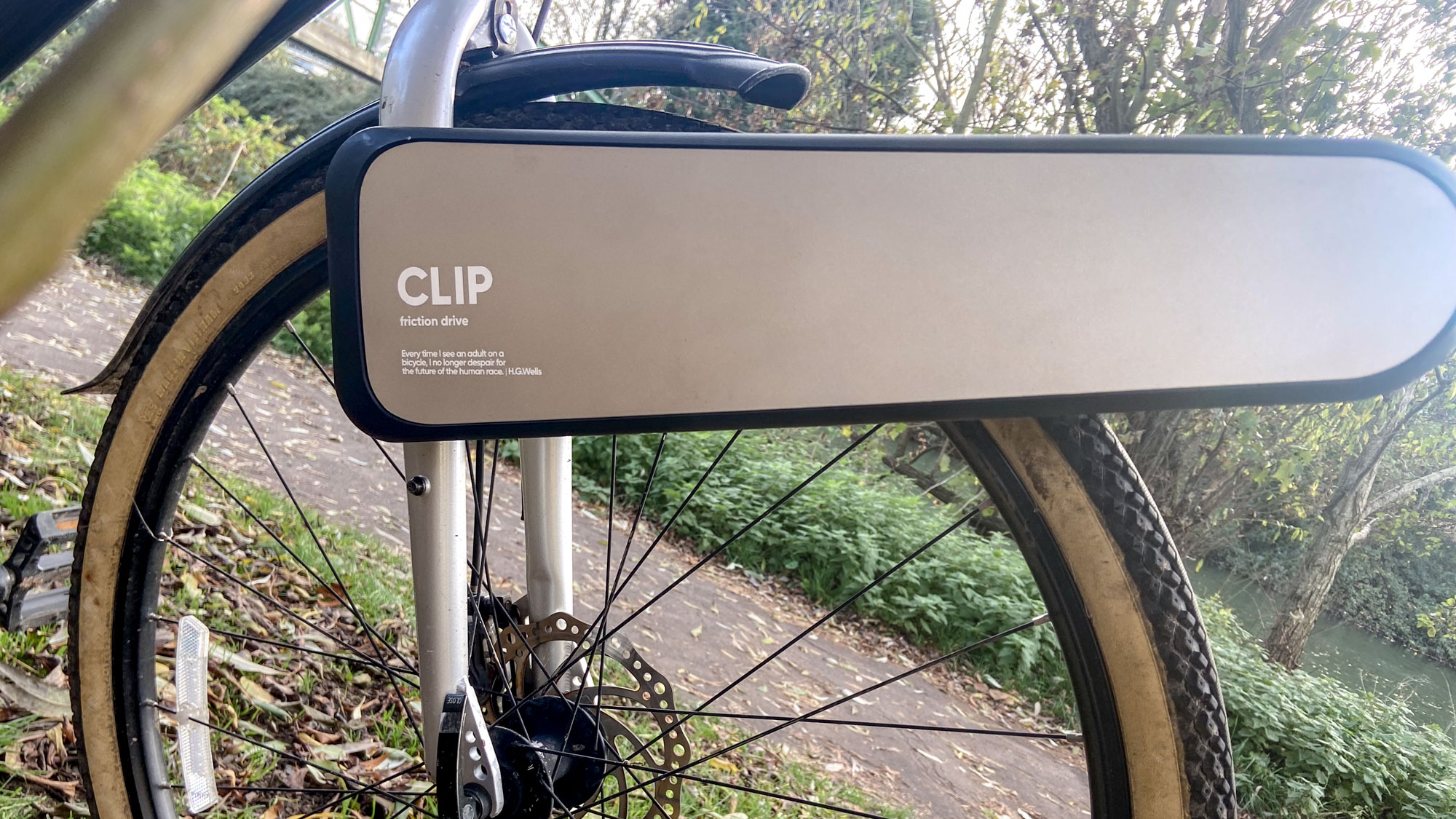
I used the regenerative braking button when going down hill. To use this, you hold down the rectangular-shaped clear button under the big red boost button while braking. This sends a little power back to the CLIP, but honestly, I didn’t find that it padded out my range considerably.
I live in Bath, U.K., which is a city built around a floodplain, surrounded by hills on all sides. The varied geography of the city meant that I could test out uphill, downhill, flat surfaces, and greenway paths. The CLIP is not designed for offroading, but I rode the bike along a riverside bicycle path and it was fine. I had a great time riding on the flat bike path and would say that the CLIP made pedaling easier, but going uphill, this power felt negligible.
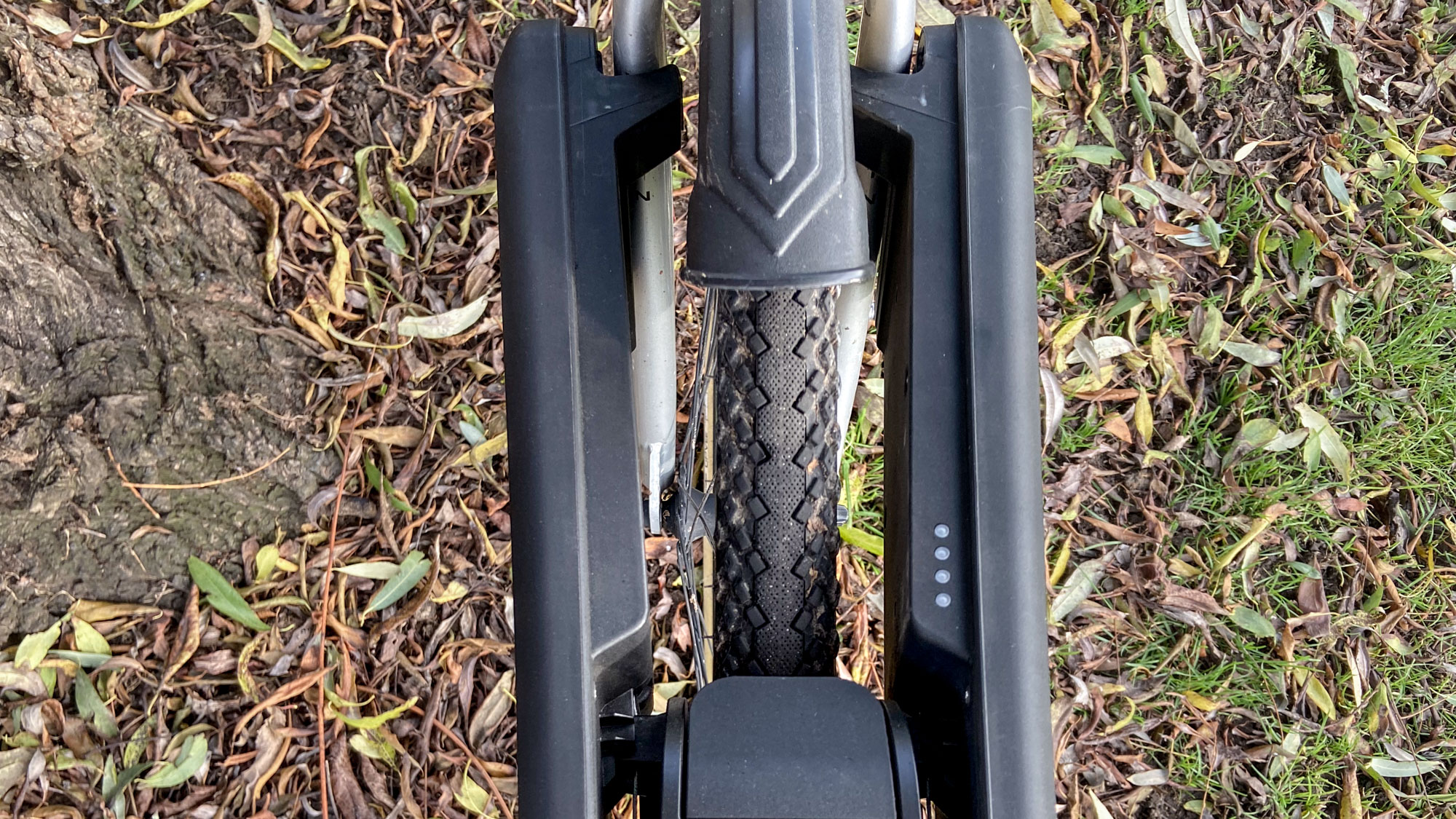
While the removable design is handy, there’s no waterproofing, which means you can’t ride the CLIP in wet weather. Living in the U.K., this would prove an issue if I were to use the CLIP as my main source of transportation. Obviously I could bypass this by simply removing the CLIP on rainy days and riding my bike manually, but then, what’s the point of having a CLIP in the first place? If you live in Arizona or somewhere just as dry, this wouldn’t be an issue for you — but for perennially damp England, this is a major con.
Overall, the CLIP makes it a little easier to ride a bike, but I don’t think the difference is noticeable enough to justify its $500 price tag. If you’d like to convert your existing bike, we’d recommend the 378Wh Swytch Go++ conversion kit for $475. The Swytch Go, and its sibling the Swytch Air, are both IPX6 waterproof, so you can ride them in the rain without any worries.
CLIP review: Battery life and range
Now, this is where my biggest qualm with the CLIP comes into play. The maximum range of the $499 Commuter is 6 miles, which isn’t very far, while the Explorer’s range is 15 miles. And if you’re blasting the boost button, that range drops considerably lower. The battery is 96Wh and the Explorer model’s is 192Wh. Comparatively, the $349 Swytch Go has an 187Wh battery, which lasts for around 25 miles. You can upgrade the Swytch to a 281Wh Go+ ($399) or 378Wh Go++ battery ($475) — in real-life, these will net you up to 40 or 60 miles, respectively.
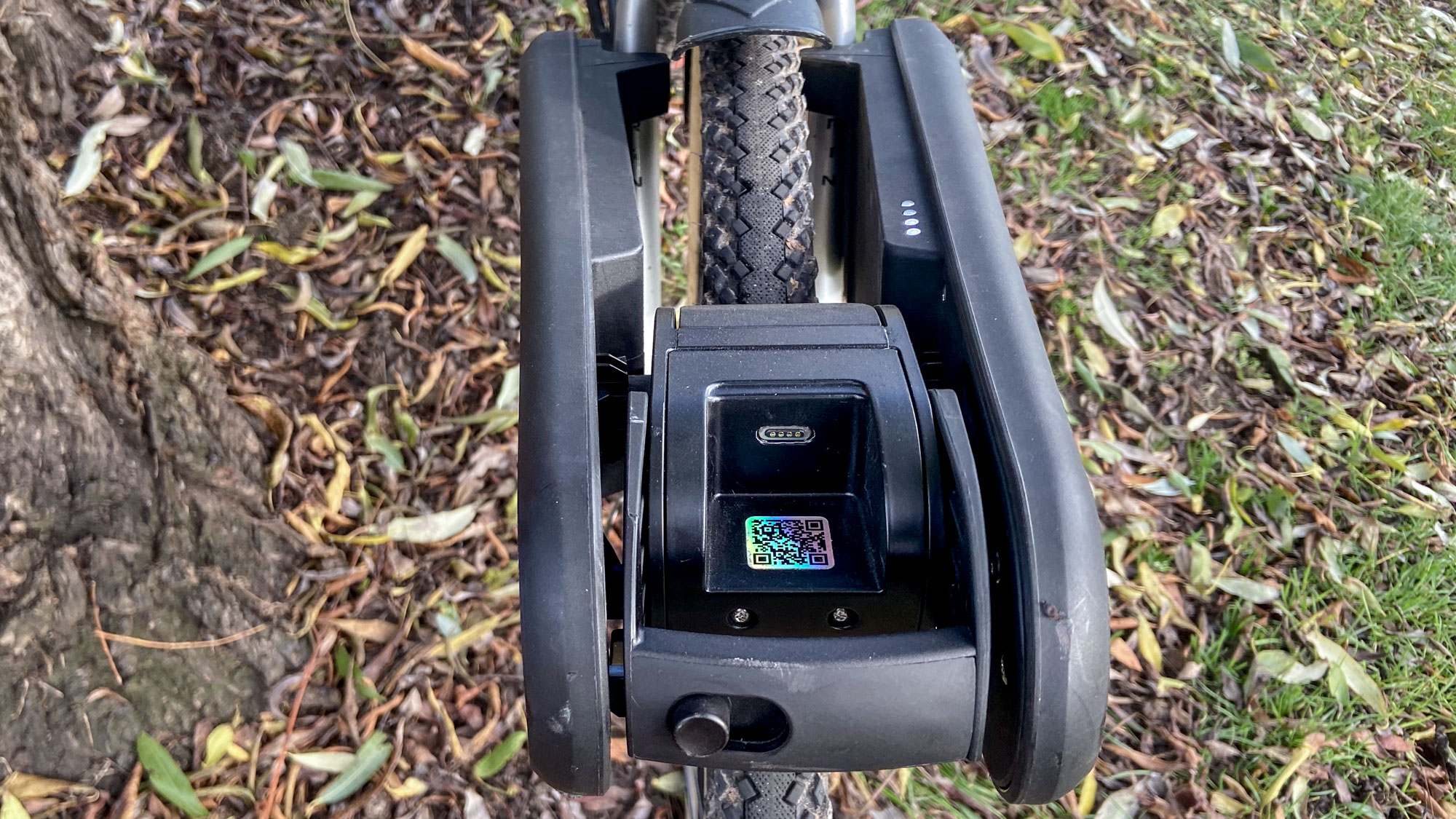
When you put those stats next to one another, $499 for 4-6 miles versus $349 for up to 25 miles is quite a stark difference. For me, a 4-mile range means I would have to charge the CLIP after arriving at the office, and when I get home. The CLIP did take just 23 minutes to charge completely during testing, but 46 minutes a day feels like too much charging time for the money.
If you want to store the CLIP between uses, CLIP recommends that you only charge it to 75% before storage, to prolong the life of the battery.
CLIP review: Verdict
I wanted to like the CLIP e-bike conversion. However, I think CLIP has a long ride ahead of it to get this product to where it needs to be. The kit has a fantastic design that’s super easy to install and remove, perfect for traversing the city in a pinch. It charges in just 23 minutes, which means you’ll be fully juiced in no time, but I shouldn’t need to charge the battery as often as I do.
The battery lasts for just 6 miles — 4 if you’re mashing the boost button — making it difficult to rely on the CLIP for anything but short commutes. I found that CLIP lasted me for 1 ½ commutes, so I couldn’t get back home on it. I wouldn’t trust this to power my weekend adventures across the city, even though it’s designed for city traveling.
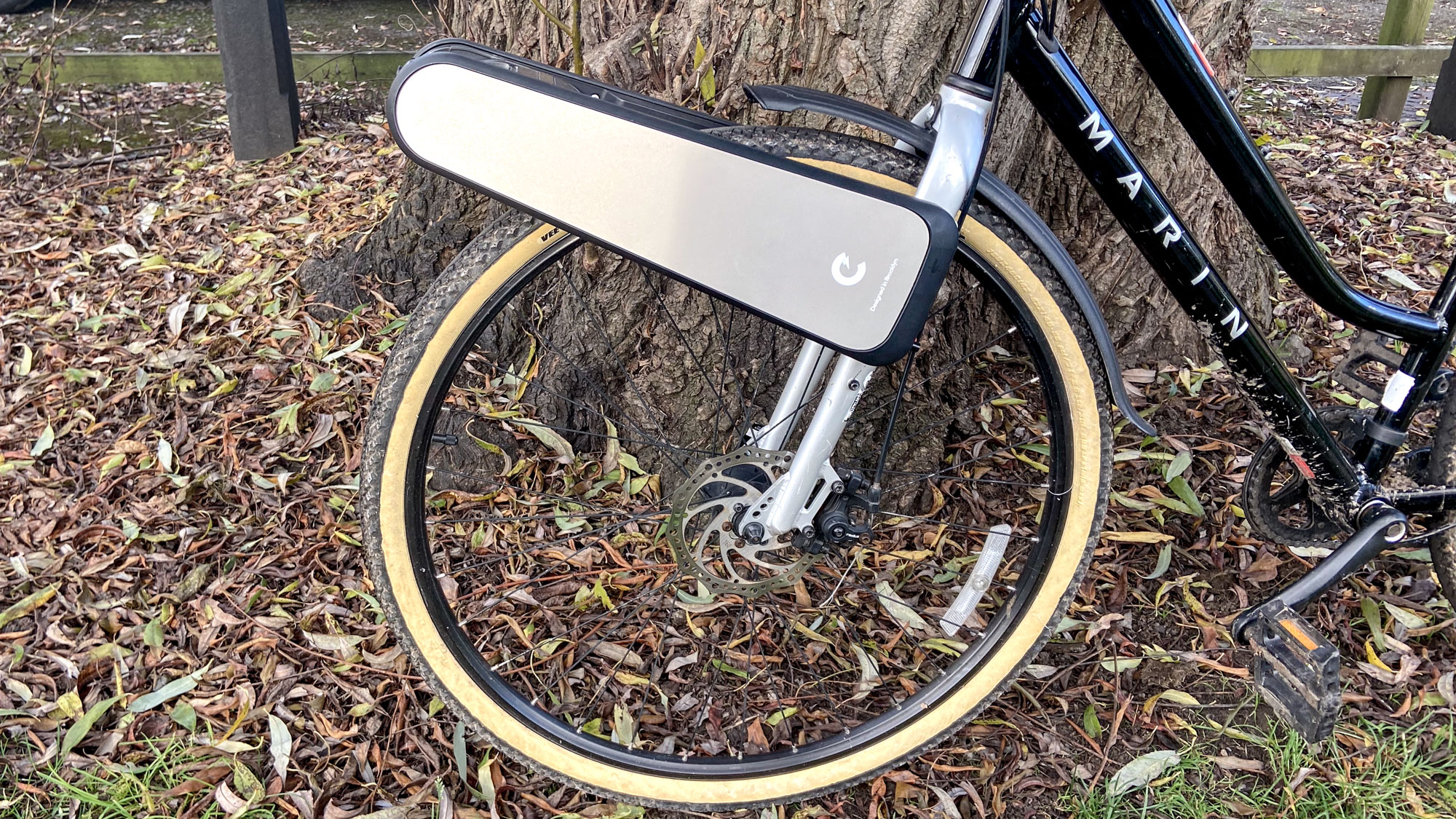
On top of that, I couldn’t use the bike on one of my testing days due to the typical rainy British weather. If you live in a wet climate like me, I can’t recommend this product. The CLIP is best suited for a dry, flat city, and a sub-4 mile commute. Any other environment? Skip it.

Erin Bashford is a staff writer at Tom’s Guide, covering reviews. She has a Masters in Broadcast and Digital Journalism from the University of East Anglia and 7 years of experience writing music, events, and food reviews. Now she’s turned her attention to tech for Tom’s Guide, reviewing everything from earbuds to garlic crushers. In her spare time you can find her reading, practising yoga, writing, or stressing over today’s NYT Games.
